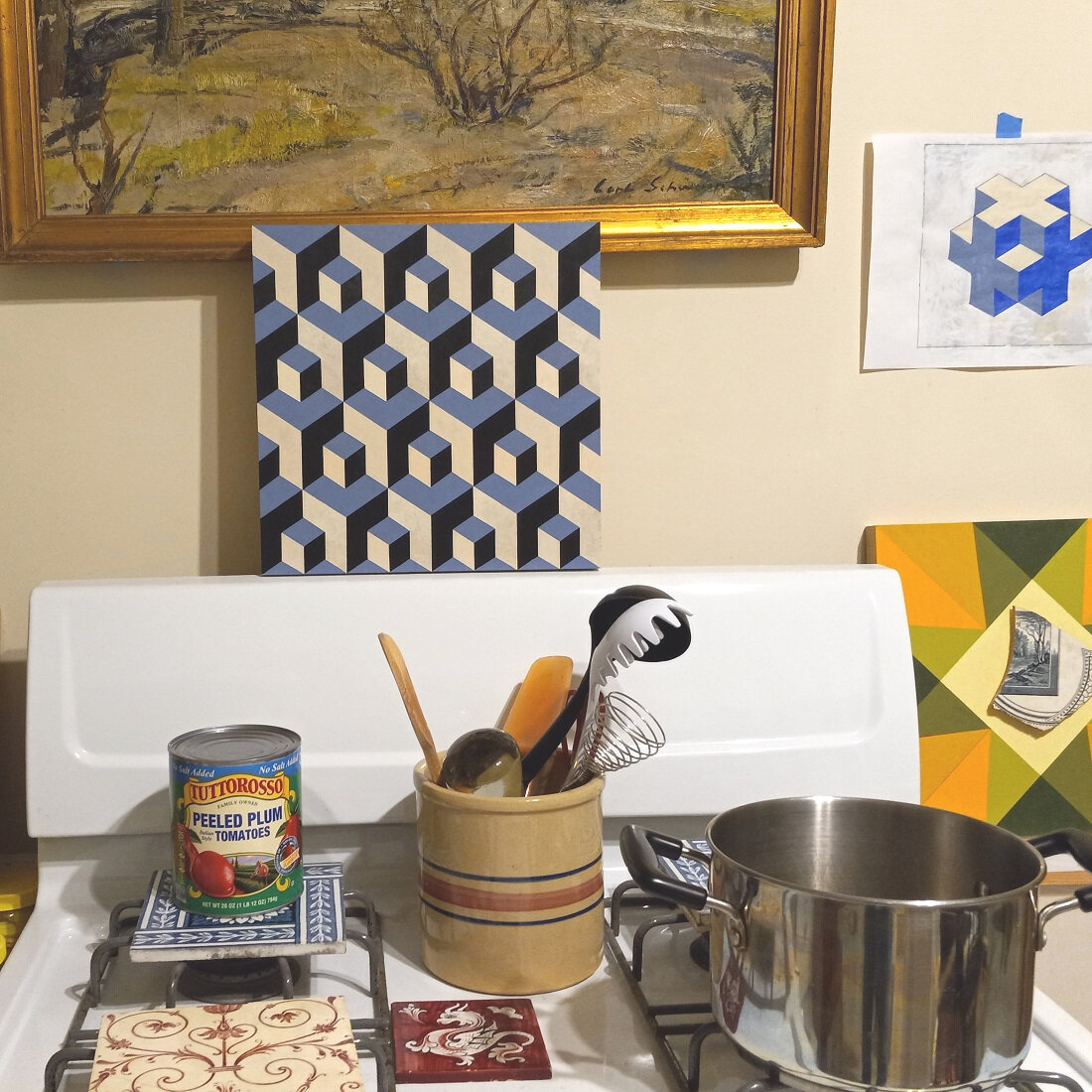Jamestown Art Center, Jamestown RI Member’s Show (October 30 - December 15, 2021) Exceptional stand-out: Timothy Welsh
The member’s show at the Jamestown Art Center, Jamestown RI (October 30 - December 15, 2021) features numerous Rhode Island art stars with some exceptional stand-outs. Timothy Welsh, an artist who I have become friends with and whose work Vallot has sold in the past, is one of those stars and his work in the JAC is one of those stand-outs.
The exquisite raised-panel painting, Postcard on the Cafe Floor, is technically refined, with an adept execution that only an artist who has devoted his life to art could create. The postcard in the painting is a recognizable reproduction of a Matisse cut-out; Matisse being a staple in museum gift shops. The Welsh painting then, in this regard, is (in part) a painting of a reproduction. It’s at once playful and raises a philosophical question about where original and facsimile begins and ends.
Underneath the “postcard” is the “cafe floor.” The floor is a neo-Roman mosaic, a common design feature in late 19th century museums and institutions. The “floor” slips away from the title (Welsh’s titles are, bar none, poetic and gorgeous) and conjures up op-art and brutalist architecture. Hues and coloration are played with too, and are reminiscent of Josef Albers’ famed color experiments. And the panel’s density of recognizable artists and artistic movements just keeps multiplying - and somehow, this powerful little painting weaves them all together. Along these lines, the painter’s super-successful use of artists and artistic movements is analogous to the harmonious way in which complimentary colors create op-art effects, allowing the viewer to see, and in the same way think of, something more.
Timothy Welsh’s home-studio - Providence, RI
I found the same kaleidoscopic effect in play, both visually and aesthetically, when I have visited Tim Welsh’s home-studio in Providence. My thoughts immediately went to the historical photographs I have seen of Joseph Cornell’s famed Utopia Parkway home-studio, and the intricate way bits of otherwise “junk”, (like cereal box bar codes and peanut butter jars), are carefully cleaned, excised, organized, boxed and readied.
Timothy Welsh’s home-studio - Providence, RI
Beyond the impressive obsessiveness of such clipping, saving and organizing, was an evident devotion to experimentation. In the studio the artist’s panel paintings are arranged to catch the plays of light in the most interesting or least obvious ways. They might be balanced on a stove top, or fixed high on the wall, but they are otherwise targets, both finished and unfinished, for mirrored reflections and diffuse geometric beams of light, coming through the window blinds. Photographs of these spontaneous happenings are on the artist’s work table, and leave no doubt that Timothy Welsh is actively researching the question of how to infuse even more meaning into his extraordinary panel paintings.
Timothy Welsh’s home-studio - Providence, RI




